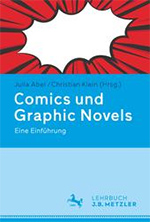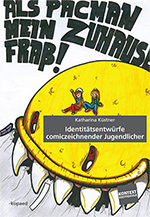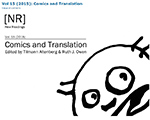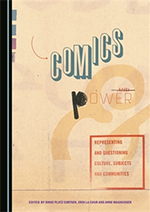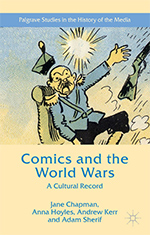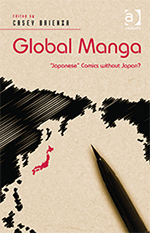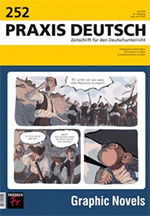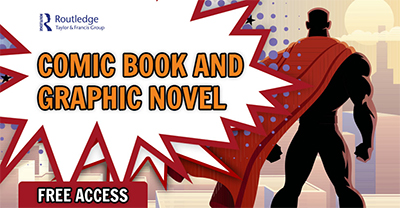Im Monitor werden in unregelmäßigen Abständen aktuelle Publikationen aus den letzten 6 Monaten vorgestellt, die für die Comicforschung relevant sein könnten. Die kurzen Ankündigungstexte dazu stammen von den jeweiligen Verlagsseiten. Haben Sie Anregungen oder Hinweise auf Neuerscheinungen, die übersehen worden sind und hier erwähnt werden sollten? Das Team freut sich über eine Mail an redaktion@comicgesellschaft.de. -> Zu früheren Monitoren.
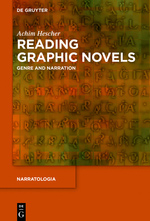
Reading Graphic Novels.
Genre and Narration
Achim Hescher
De Gruyter
219 Seiten
ISBN 978-3-11-044594-7
~€ 69,95
Februar 2016
Verlagsseite
Distinguishing the graphic novel from other types of comic books has presented problems due to the fuzziness of category boundaries. Against the backdrop of prototype theory, the author establishes the graphic novel as a genre whose core feature is complexity, which again is defined by seven gradable subcategories: 1) multilayered plot and narration, 2) multireferential use of color, 3) complex text-image relation, 4) meaning-enhancing panel design and layout, 5) structural performativity, 6) references to texts/media, and 7) self-referential and metafictional devices. Regarding the subcategory of narration, the existence of a narrator as known from classical narratology can no longer be assumed. In addition, conventional focalization cannot account for two crucial parameters of the comics image: what is shown (point of view, including mise en scène) and what is seen (character perception). On the basis of François Jost’s concepts of ocularization and focalization, this book presents an analytical framework for graphic novels beyond conventional narratology and finally discusses aspects of subjectivity, a focal paradigm in the latest research. It is intended for advanced students of literature, scholars, and comics experts.
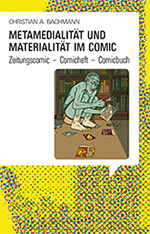
Metamedialität und Materialität im Comic. Zeitungscomic – Comicheft – Comicbuch
Christian A. Bachmann
Bachmann Verlag
290 Seiten
ISBN 978-3-941030-65-7
~€ 39,90
Februar 2016
Verlagsseite
Wie alle Veröffentlichungen unterliegen Comics medialen Bedingungen, die sich direkt und indirekt auf ihre Ausdrucksmöglichkeiten auswirken. So präsentiert sich der Zeitungsstrip auf der Seite als Ganzes, während das Comicheft längere zusammenhängende Bildsequenzen auf Seiten auf- und verteilt, die die Kulturpraxis des Blätterns voraussetzen. Das Buch erscheint als dreidimensionales Objekt, das Comics außer gewisser sozialer Implikationen auch weitreichende gestalterische Möglichkeiten eröffnet. Comicautorinnen und -autoren reflektieren diese Bedingungen und machen sie nicht selten zum Gegenstand metamedialer Werke. Dabei werden die materiellen Eigenschaften der Trägermedien oftmals nicht nur thematisiert, sondern selbst zu Zeichen in einem hybriden semiotischen Gefüge. Raues Papier, ungewöhnliche Heftformate und bedruckte Buchdeckelkanten sind dann nicht bloß dekoratives Beiwerk oder gar paratextuelle Beliebigkeiten, sondern Elemente ästhetischer Strategien, die eines Zugangs jenseits der etablierten Interpretationsansätze bedürfen.
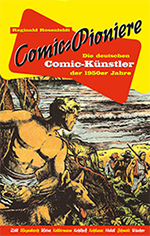
Comic-Pioniere. Die deutschen Comic-Künstler der 1950er Jahre
Reginald Rosenfeldt
Bachmann Verlag
294 Seiten
ISBN 978-3-941030-63-3
~€ 25,00
Februar 2016
Verlagsseite
Die Comics verdanken ihre ungeheure Beliebtheit in den Nachkriegsjahren einigen wenigen Talenten. Nie mehr war das Angebot der Bildergeschichten so vielfältig wie in den 1950er und 1960er Jahren, denn es erfüllte den Hauptpart der trivialen Unterhaltungsmedien. Die Ausnahmekünstler, deren Biografien in diesem Buch dargestellt sind, schufen nicht nur bis heute unvergessene Werke und Figuren, sondern legten damit den Grundstein für die spätere Entwicklung des Comics in Deutschland. Vorgestellt werden Klaus Dill, Johannes Eduard Hegenbarth (Hannes Hegen), Wilhelm Hermann ›Bob‹ Heinz, Walter Kellermann, Willi Kohlhoff, Roland Kohlsaat, Helmut Nickel, Manfred Schmidt und Hansrudi Wäscher.
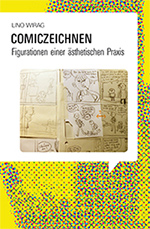
Comiczeichnen. Figurationen einer ästhetischen Praxis
Lino Wirag
Bachmann Verlag
276 Seiten
ISBN 978-3-941030-67-1
~€ 36,00
Februar 2016
Verlagsseite
Comiczeichnen ist eine kreative Praxis, in der hochspezialisierte körperlich-zeichnerische und intellektuell-kreative Fähigkeiten und Techniken zusammenspielen. Die Comicgeschichte hat immer wieder einzigartige Zeugnisse dieser Kulturtechnik hinterlassen: Skizzen, Studien, Skripte, getuschte Originalseiten und natürlich digitale Daten.
Wie aber sind diese Spuren der ästhetischen Produktion zu lesen? Und wie können kreative Praxisprozesse überhaupt beschrieben werden? Damit beschäftigt sich die Comicentwurfsforschung, deren Aufgaben und Herausforderungen im vorliegenden Band erstmals skizziert werden. Darüber hinaus untersucht das Buch verschiedene Figurationen des Comiczeichnens, an denen sichtbar wird, welche metaphorischen, narrativen oder diagrammatischen Verfahren aufgesucht werden, um komplexe Praktiken wie das Comiczeichnen zu kommunizieren. Dabei werden Kreativitäts-, Handlungs- und Erkenntnistheorie zu einem neuartigen Blick auf Produktionsästhetik verbunden. In Exkursen untersucht der Band außerdem die Ästhetik des Comicentwurfs aus einer phänomenologisch inspirierten Perspektive und erläutert die sozioökonomische Situation zeitgenössischer Comicproduzenten. Die zahlreichen Abbildungen gestatten dabei einen Blick in die Werkstätten von namhaften Comiczeichnern wie Hergé, Chris Ware, Art Spiegelman oder Flix.
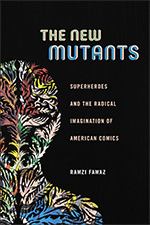
The New Mutants. Superheroes and the Radical Imagination of American Comics
Ramzi Fawaz
NYU Press
368 Seiten
ISBN 978-1-479-82308-6
~$ 29,00
Januar 2016
Verlagsseite
In The New Mutants, Ramzi Fawaz draws upon queer theory to tell the story of these monstrous fantasy figures and how they grapple with radical politics from Civil Rights and The New Left to Women’s and Gay Liberation Movements. Through a series of comic book case studies – including The Justice League of America, The Fantastic Four, The X-Men, and The New Mutants –alongside late 20th century fan writing, cultural criticism, and political documents, Fawaz reveals how the American superhero modeled new forms of social belonging that counterculture youth would embrace in the 1960s and after. The New Mutants provides the first full-length study to consider the relationship between comic book fantasy and radical politics in the modern United States.
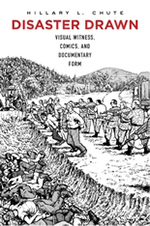
Disaster Drawn. Visual Witness, Comics, and Documentary Form
Hillary L. Chute
Harvard University Press
376 Seiten
ISBN 978-0-67450-451-6
~€ 35,00
Januar 2016
Verlagsseite
In hard-hitting accounts of Auschwitz, Bosnia, Palestine, and Hiroshima’s Ground Zero, comics display a stunning capacity to bear witness to trauma. Investigating how hand-drawn comics has come of age as a serious medium for engaging history, Disaster Drawn explores the ways graphic narratives by diverse artists, including Jacques Callot, Francisco Goya, Keiji Nakazawa, Art Spiegelman, and Joe Sacco, document the disasters of war. Hillary L. Chute explains how the form of comics—its collection of frames—lends itself to historical narrative. By interlacing multiple temporalities over the space of the page or panel, comics can place pressure on conventional notions of causality. Aggregating and accumulating frames of information, comics calls attention to itself as evidence. Disaster Drawn demonstrates why, even in the era of photography and film, people understand hand-drawn images to be among the most powerful forms of historical witness.
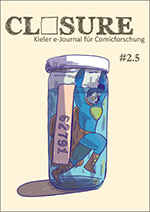 Seit 1. Juni ist die neue Ausgabe des Kieler e-Journals zur Comicforschung, CLOSURE, online. Bei CLOSURE #2.5 (5/2016) handelt es sich um die erste Halbjahresausgabe, die insbesondere Rezenzionen von Primärmaterial und Fachliteratur gewidmet ist:
Seit 1. Juni ist die neue Ausgabe des Kieler e-Journals zur Comicforschung, CLOSURE, online. Bei CLOSURE #2.5 (5/2016) handelt es sich um die erste Halbjahresausgabe, die insbesondere Rezenzionen von Primärmaterial und Fachliteratur gewidmet ist: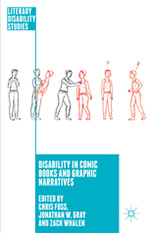

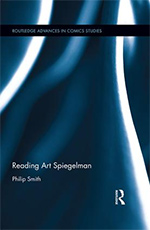
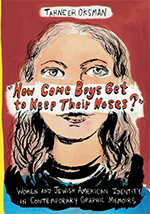
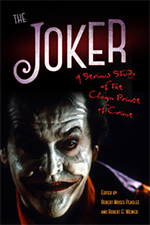
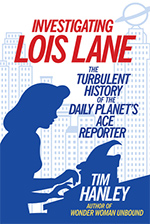






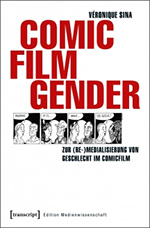
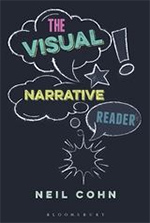
 Im Januar widmet das Rezensionsforum
Im Januar widmet das Rezensionsforum 